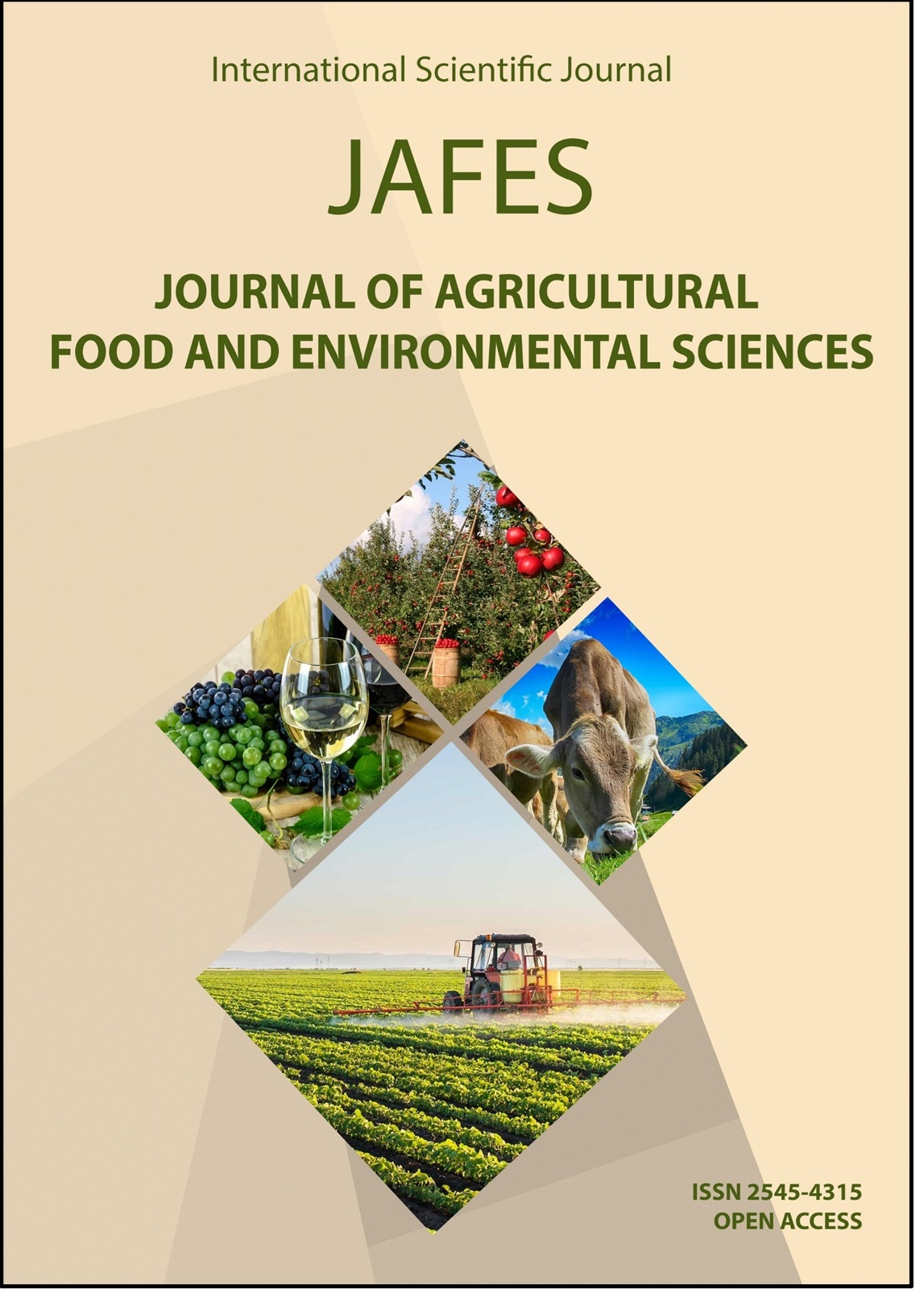AGRONOMIC EVALUATION OF TOMATO HYBRIDS FOR GLASS-HOUSE PRODUCTION
Клучни зборови:
protected crops, vegetable production, yieldАпстракт
The tomato is the most widely cultivated vegetable crop, both in glasshouses and walk-in tunnels. The objective of the trial is to make a recommendation for tomato hybrids intended for protected crops production in the Republic of Macedonia. It was carried out in the region of Sv. Nikole (Central Macedonia) in glasshouses. The following newly introduced tomato hybrids, made by four different producers, have been examined: Fito - Meriva F1, Enza Zaden - Lezoforta F1 and Amaneta F1, Syngenta - Zouk F1, Clause - Loreli F1. The applied experimental design was a randomized block system in five replications. Aside from the dynamics of germination, flowering, and ripening and harvesting, the productive traits of each hybrid were analyzed using ANOVA. It was confirmed that the hybrids Zouk F1 and Loreli F1 had the earliest germination and the latest germination was exhibited by the Amaneta F1. The shortest period between germination and flowering was recorded in the hybrid Loreli F1, and the longest in Lezoforte F1. The period between flowering and fruit ripening was shortest in the hybrid Zouk F1, and the longest one in Amaneta F1. The shortest period starting from germination to the beginning of ripening was recorded in the hybrid Amaneta F1 and the longest in Zouk F1.
Референци
Bogevska, Z., Davitkovska, M., Iljovski, I.,Ristovska, B. (2010). Potencijalot na Republika Makedonija vo sozdavanje na brend sorti od zelenchukovi kulturi. Godisen zbornik na Fakultetot za zemjodelski nauki I hrana vo Skopje, Godina/Volume 55, str. 23-29.
Borošic, J., Lovokovic-Milinkovic, J., Matotan, Z., Marušic, V., Čermak-Horbec, K. (2001) Novo introducirane sorte rajčide, paprike i salate u Republici Hrvatskoj. Znastveni skup hrvatskih agronoma s međunarodnim sudjelovanjem. Zbornik sažetaka.
Demirovska, V., Čirkova, M., Jankulovski, D., Jovančev, P. (1990) Jesenja proizvodnja paradajza u plastenicima u skopskom region. Jugoslovenski simpozijum intenzivno gajenje povrda i proizvodnja u zaštidenom prostoru. Zbornik radova. pp. 369-374
Ibraim, J. (2012). Karakterizacija na avtohtoni populacii domat (Lycopersicon esculentum Mill.) od tipot jabucar vo Republika Makedonija (Magisterski trud). Univerzitet “Sv. Kiril I Metodij” – Skopje. Fakultet za zemjodelski nauki i hrana vo Skopje.
Jankulovski, D., Martinovski, Gj., Petrvska, J.K., Jankuloski, Lj. (2002). Characteristics of new tomato hybrids (Lycopersicon esculentum Mill.) for greenhouse production. First Symposium on Horticulture, Symposium proceedings, Skopje. pp. 186-190.
Lazic, B., Markovic, V., Gjurovka M., Ilin Z., Jankulovski, D., Martinovski, Gj. (2007). Specijalno gradinarstvo (avtorizirani predavanja). Univerzitet „Sv. Kiril i Metodij“ – Skopje. Fakultet za zemjodelski nauki i hrana vo Skopje.
Lekshmi, S. L., Celine, V. A. (2015). Evaluation of tomato hybrids for fruit, yield and quality traits under polyhouse conditions. International Journal of Applied and Pure Science and Agriculture (IJAPSA). Volume 01, Issue 7. pp. 58-64
Milutinovic, S., Đukic, Ž. (1996). The yield and yield components at tomato cultivars and hybrids. First Balkan Symposium Vegetables & Potatoes. The Book of Abstracts. p. 134
Shrestha,S. L., Sah R. L. (2014). Evaluation of Tomato Cultivars for Central Tarai of Nepal. Nepal Journal of Science and Technology Vol. 15, No.2.pp. 11-16.



